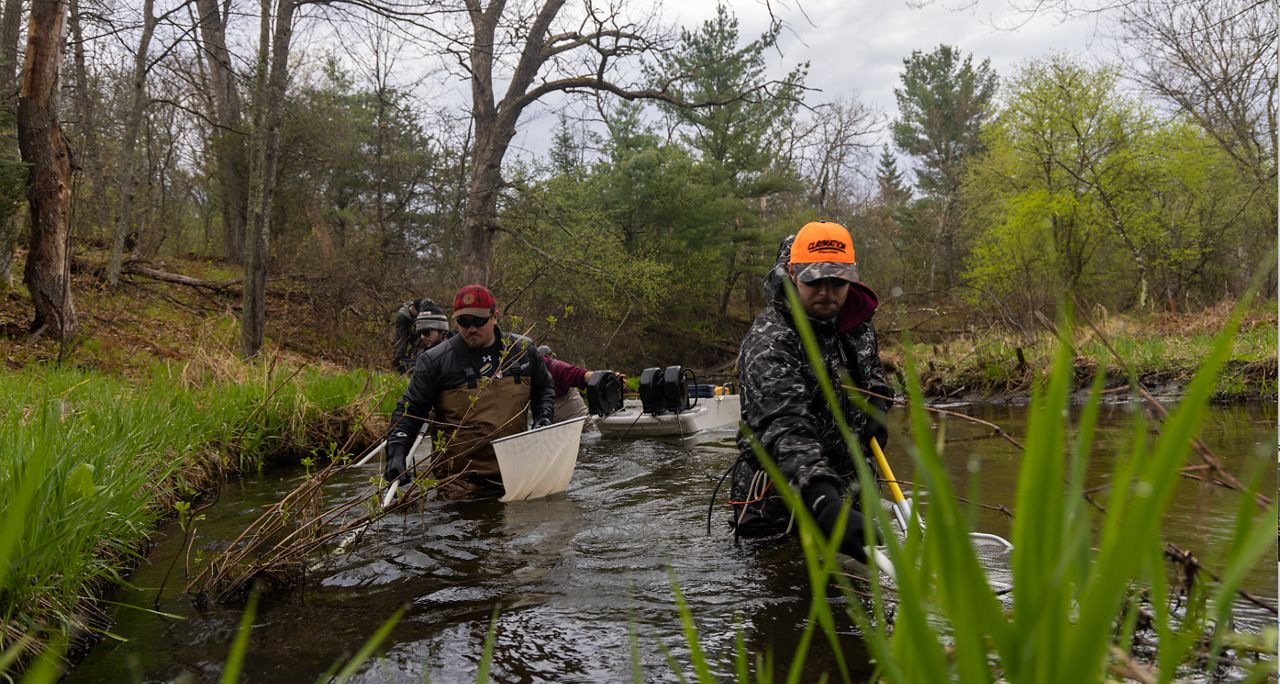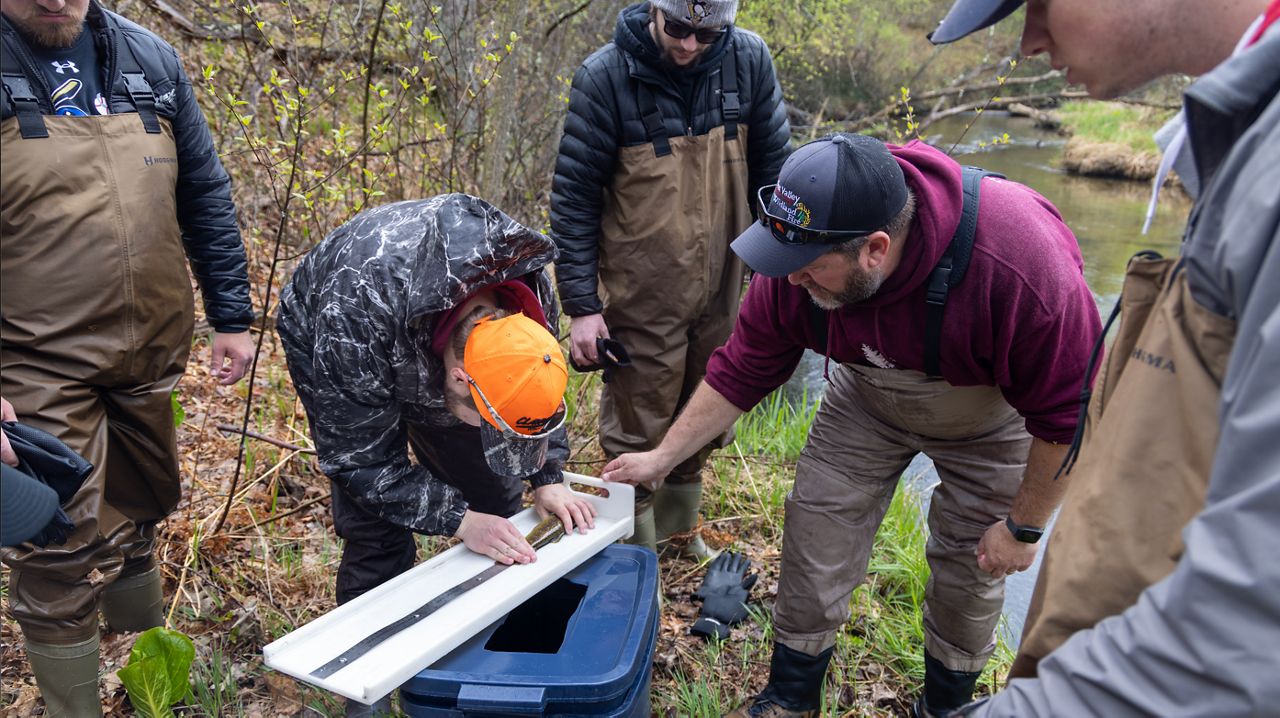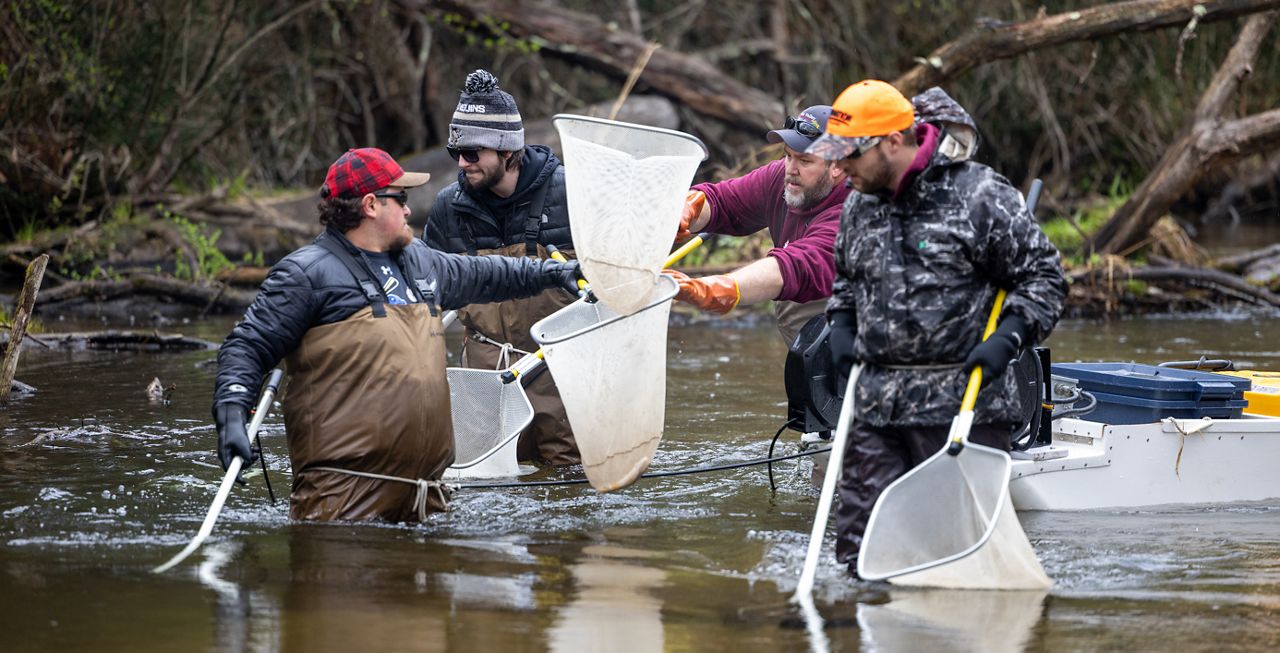WAUPACA, Wis. — On Friday, the classroom was a trout stream tucked away in the southwest corner of Waupaca County.
Electrofishing probes and nets served as the textbooks and notebooks, and for this day only, there was a dress code: Waders.
Students in a Fisheries Management class at Fox Valley Technical College (FVTC), in cooperation with the Wisconsin Department of Natural Resources (DNR), were conducting a trout population assessment at Radley Creek.
“We’re using a toad barge electrofishing setup, to use electricity to cause the fish to swim toward us, said Paul Groell, Natural Resources Department Chair at Fox Valley Technical College.
“So, it doesn’t electrocute them. It doesn’t harm them. With electricity, it forces their muscles to contract, and they swim toward our probe. So, each student has a probe and a net, and they work the probe into the cover, drawing the fish out.”

They net the fish, put into a container with water from the stream and tally and measure them. Friday was a mark-and-recapture process. Earlier in the week was a marking run, where they fin clipped the fish captured. Friday’s job was to capture the fish once more to see if they were fin clipped or not.
“So, we plug those numbers into our formula,” Groell said. “We come up with a population estimate for this stretch, and we extrapolate that out to a mile of length on the river. And we can say that Radley Creek has this many trout per mile on this stretch of river.”
The DNR then uses those numbers to help determine the bag limit per day, per fisherman, along with a size limit for the trout.
“It’s a really good technique to get a handle on how many fish are there,” Groell said. “So, if someone were passing through this stretch of river angling, and they caught one fish, they might be like, ‘Well, there’s not many fish in this stretch of the river.’ We come through with electricity and we get hundreds. It’s a good representation of what can be held in the habitat on a good, healthy stream.”
Jack Stecker, a sophomore from Chilton, was excited by this kind of classroom setting.
“I’m a very firm believer in getting the experience firsthand, other than reading about in textbooks,” he said. “Sure, you can read about a lot of this in textbooks. But until you start feeling it, until you start getting it in your hands and being out in the field, you’re never really going to understand how important the work is until you get out in the field.”
Groell said this was just one of several projects the students partake in.

“They also work with the DNR during the sturgeon spearing season in February,” he said. “They also work with the DNR during their lake assessment through March and April, when they’re doing netting on the different lakes.
“So, they get their hands wet and slimy with fish multiple times throughout the class. And that again, it’s that hands-on learning that we try to emphasize at Fox Valley Technical College that gives them not just the theory, but the application and understanding about how it all fits together.’’
FVTC has been working with the DNR for about 50 years, and students have worked Radley Creek for over 15 years.
“Just this partnership helps the DNR as well, because we often volunteer in times to provide bodies and manpower to help them with some of their fieldwork that they may not ordinarily get done without volunteers,” Groell said. “But it’s also helpful for us because they’re sharing that time and that field work and that training with our students to get up to speed on what they may be doing in their job.
“So, some of these students may go on to be fisheries technicians for a career. They also learn so many different skills and pieces of knowledge that are going to be applicable in other careers, whether they were to go into forestry, or soil and water conservation, or watershed management. They’ll use some of these things in all those different types of career paths.”
And for Stecker, he also learned the importance of finding a job you love.
“I love this type of experience,’’ he said. “And this will be a great time, anytime that I do it in my professional career.”
Story idea? You can reach Mike Woods at 920-246-6321 or at: michael.t.woods1@charter.com



